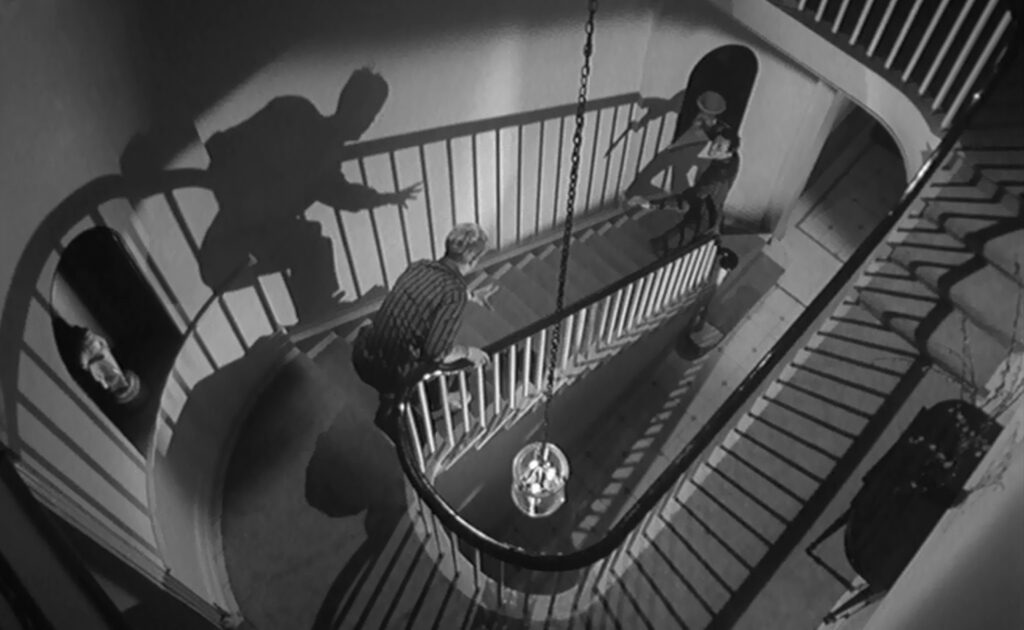
The Servant
1963, directed by Joseph Losey
The opening shot of The Servant looks down the Royal Avenue parkway toward the central tower of Christopher Wren’s Royal Hospital in Chelsea. This vista appears again at roughly 40-minute intervals, dividing the film into thirds if you ignore an oddly placed extra shot of the hospital 52 minutes in. Each of the three evenly-spaced panoramas of the hospital marks a shift in the relationship between Tony and his manservant Hugo Barrett. In the first third Tony has the upper hand; in the middle the relationship is balanced and could go either way; and in the last third Hugo has turned the tables.
Wren’s building serves as a convenient marker, but it’s not merely a bookmark or a chapter heading. The opening scenes trace a path from the 17th century hospital to Tony’s 19th century townhouse to a 20th century nightclub. These locations suggest the sweep of history, cinematically spanning four centuries in a brief sequence. Later the Mounsets’ palace will represent the 18th century in two scenes filmed at Chiswick House, built in 1729.
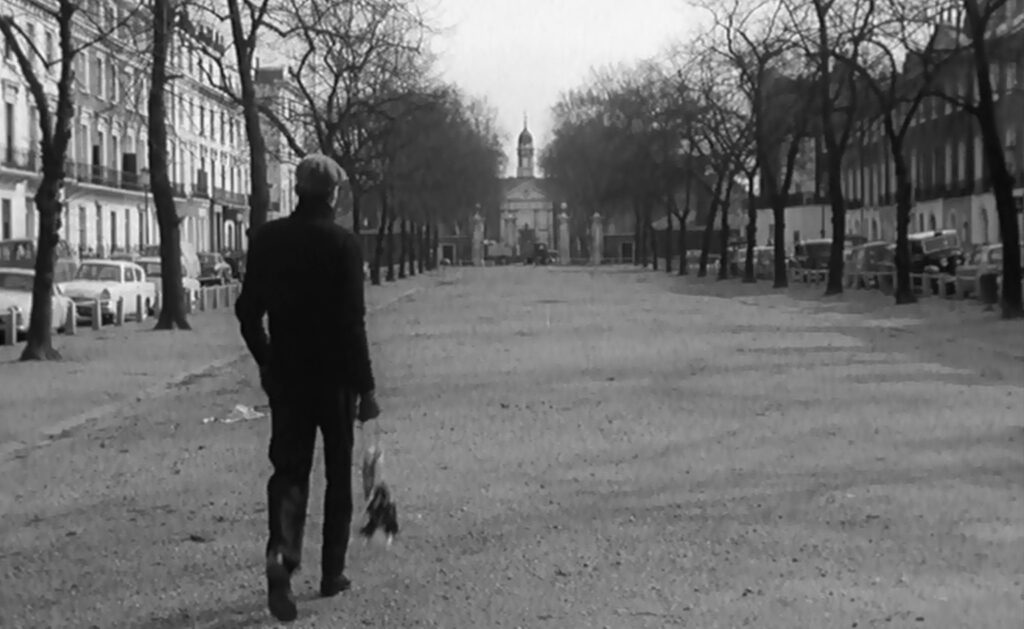
Like the architecture, the film’s music also evokes the passage of history, again traversing about four centuries from the vaguely baroque sounds of the opening instrumentation to Cleo Laine’s jazzy theme song and a live performance of “Rock Me Baby”.
The editing also suggests the movement of history, often leaping forward in time across evolutionary gaps in the characters’ relationships. From one scene to the next it’s obvious that things have changed, and we are given just enough to make the story credible. The audience must always connect the dots. Because the transitions are not seamless, time seems to slip by like history racing forward. In case this all seems speculative, the final shot confirms the film’s interest in history, coming to rest on the face of a grandfather clock.
All these allusions to history become meaningful once we notice that Tony’s townhouse is being renovated. Like the flow of history, the old is giving way to the new, but what’s remarkable is Hugo’s active role, overseeing the workmen and consulting on the decor and furnishings. The house is being adjusted to the servant’s liking. This strange fact corresponds to real-world upheavals of power. Hugo remains subservient to Tony at this stage, but he is beginning to reveal his own will. The servant, understandably, pushes history forward with more enthusiasm than his master.
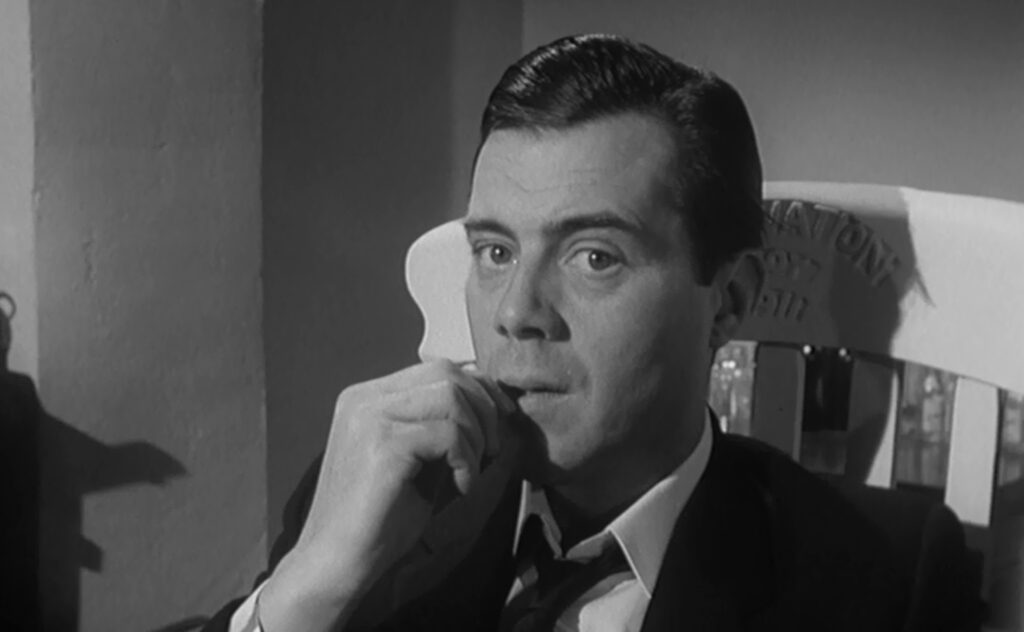
The great historical change that all of these signs point to is the upsetting of the British class system. Like the film’s architecture and music, the process spans about four centuries, from the Enlightenment to modern times, with reforms that gradually transferred powers from the monarch and the House of Lords to a democratically elected Parliament. These centuries also unleashed revolutions in social customs and shifted power away from colonizing countries.
The title of The Servant and its setting on Royal Avenue both allude to inequalities of power. The director Joseph Losey had been blacklisted in Hollywood for his Communist sympathies, driving him to work in England, and screenwriter Harold Pinter also held leftist views. In its broadest sense the movie is about power relations in general. A master-servant relationship can only last so long. Extremes of dependency are unsustainable, and when they unravel the results are chaotic and distressing for everyone involved. Instead of a graceful transition to equality, the relationship tends to devolve into ugly competition.
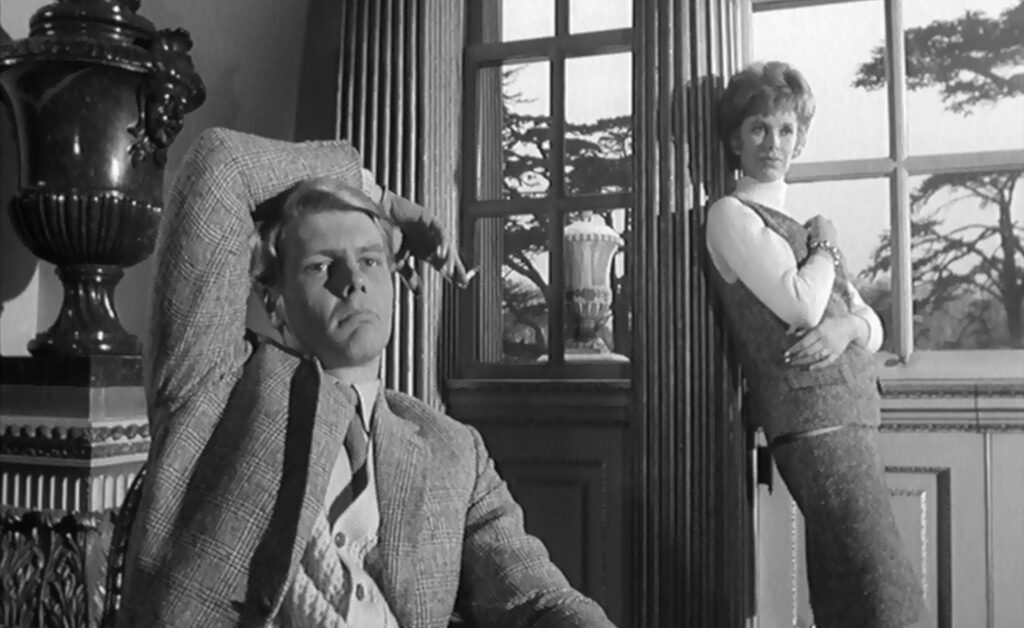
If Hugo represents the underprivileged classes, Tony stands for the old order or the dominant class. When Hugo first arrives the house is dishevelled, and Tony lies motionless in the back room. His deathlike position is ominous under the circumstances, but all the more so in an opening scene when viewers expect something dramatic. It foreshadows both Tony’s downfall and the collapse of the power structure that he represents. Once the facade of his social position is stripped away, he will be exposed as weak and infantile. In the final scene, Tony humiliates himself before his own servant, hides in the shower, crawls on the floor, and watches in a drunken stupor as Hugo kisses Susan and takes over the party.
At the beginning Tony has just returned to London from Africa, and he asks whether Hugo can cook Indian dishes, claiming some expertise in them himself. More than just a symbol of the upper class, Tony also represents Britain’s colonial power. The Servant was made during a global wave of decolonization, less than 16 years after India’s independence, when the British Empire’s holdings in Africa were asserting their freedom. Tony is involved in a business venture, trying to build three new cities in the Brazilian wilderness with plans to populate them with Turkish peasants. The whole affair seems nebulous and fanciful, but it corresponds neatly with the new direction of Western imperialism in which corporations and business enterprises take over the role of governments.
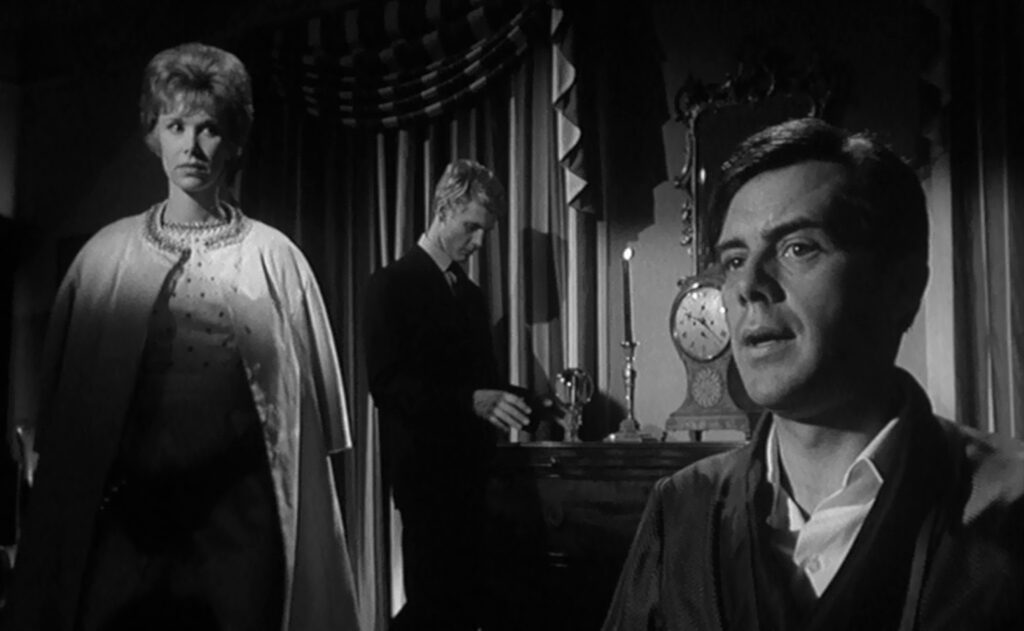
The settings and photography add to the film’s commentary on power relationships. When Tony and Hugo play a form of dodgeball on the staircase, Hugo complains that Tony is taking advantage of his higher position to score points more easily. The staircase is also where Tony and Susan find Hugo consorting with Vera in Tony’s room. Reversing the earlier scene where Hugo was humbled for catching Tony and Susan on the parlor floor, at the moment of Tony’s marriage proposal, this time the master finds himself hiding breathlessly in his own house while Hugo stands atop the stairs guarding against intruders. The master cowers at the base of the stairway while the servant appears in fearful silhouette, voice booming and smoke billowing from his mouth. Hugo has taken total command of the scene.
Just as the staircase provides a metaphor for inequalities of power, the door separating the parlor (the master’s domain) from the hallway (the servant’s domain) hints at what separates the powerful from the powerless in real life. Instead of a normal door, the opening is a secret doorway in a floor-to-ceiling bookcase. It suggests that language and culture have been perverted from their rightful purpose and conscripted into the maintenance of power relations. Words are supposed to bridge people in communication, but here their purpose is to separate.
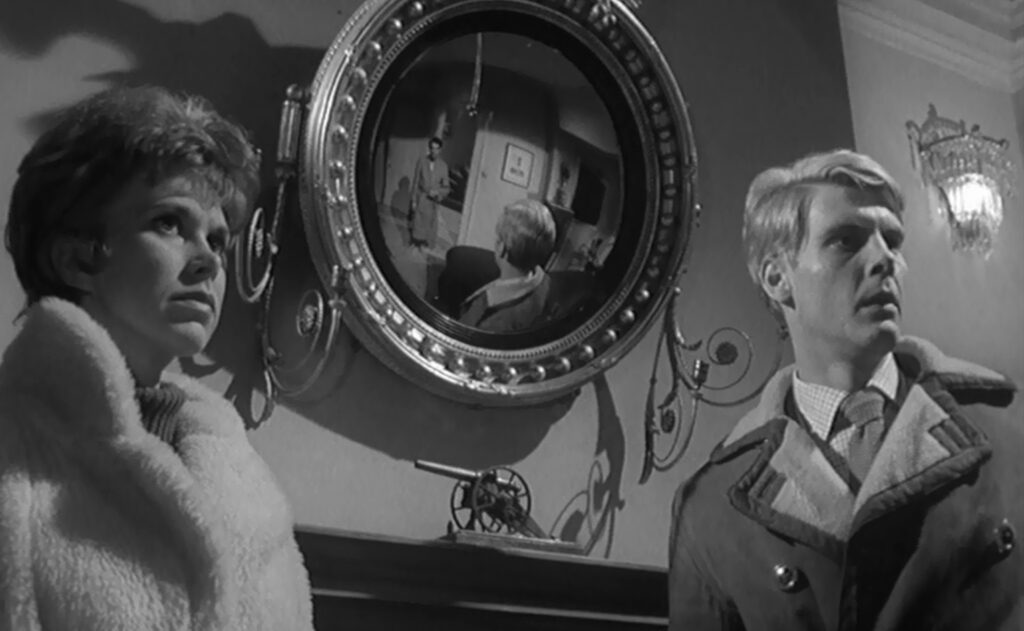
Like the staircase and bookshelf, the mirrors in Tony’s living room also describe power relationships. The two round mirrors appear at key moments, distorting the perspective, arrangement, and relative sizes of the persons framed within them. A mirror is a locus of reversal, and their fish-eye effect symbolically destabilizes the order between characters. The round mirrors also foreshadow the moment when Tony looks through a glass globe to see his whole world flipped upside-down.
Tony might view the reversal as total, but when everything is considered it’s not as neat as that. The master of the house still has enough authority to disband the party, and Susan slaps Hugo in the face on her way out, even if it fails to ease her devastation. The film does not subscribe to a simplistic Marxist forecast that the proletariat will overthrow the bourgeoisie and take their just desserts. Systemic imbalances of power lead more believably to incivility and chaos. The restaurant scene, which stands apart from the main plot, summarizes the film’s outlook. Cutting from one table to another, it shows only fragments of conversations, each defining a different form of nastiness. There is no neat solution or resolution in The Servant; instead it ends by acknowledging the unfortunate messiness of human relations.
CONNECTIONS:
Rebecca – Analysis of the British class system
Ladies in Retirement – Story of house servants upsetting the prescribed order of power
Shadow of a Doubt – Staircase separating two domains, public vs. private or high vs. low
Day of Wrath – Perversion of language’s intended purpose
Laura – Critique of a class system; clock in the final image
The Music Room – Lower class competing with and upstaging the upper class
The Cook the Thief His Wife and Her Lover – Stages of past history persisting as layers in the present
In the City of Sylvia – Long span of history collapsed metaphorically into a short period of time
Parasite – A household employee brings in relation(s) and upsets the prescribed order of power; disastrous party at the end